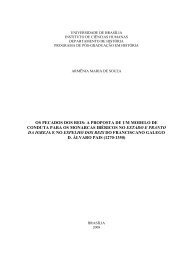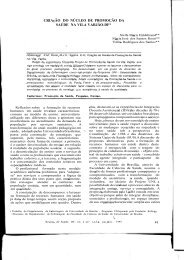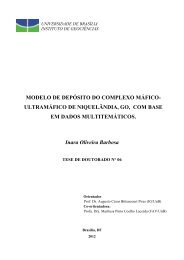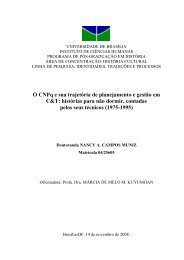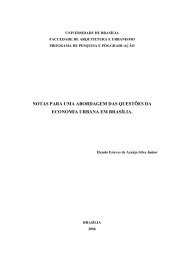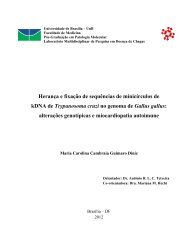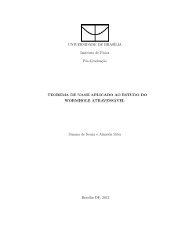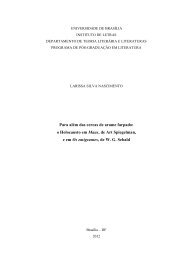As determinantes locais da paradiplomacia: o caso dos municípios ...
As determinantes locais da paradiplomacia: o caso dos municípios ...
As determinantes locais da paradiplomacia: o caso dos municípios ...
You also want an ePaper? Increase the reach of your titles
YUMPU automatically turns print PDFs into web optimized ePapers that Google loves.
105<br />
border states’ governors are also much more likely to be involved in foreign policy. This fits with<br />
assumptions in the literature as these governors are more likely to meet with their counterparts in Cana<strong>da</strong><br />
and Mexico as well as deal with issues such as immigration and border security in a greater degree<br />
(McMILLAN, 2008, p. 244).<br />
3.1.1.3 Características Políticas<br />
<strong>As</strong>pecto distinto <strong>da</strong> segmentação objetiva se relaciona com as características<br />
políticas. Especificamente, o tema político-partidário toma grande parte <strong>dos</strong> estu<strong>dos</strong> <strong>da</strong><br />
<strong>paradiplomacia</strong>. Ele está presente, basicamente, em dois vieses. O primeiro remete à relação<br />
entre parti<strong>dos</strong> <strong>dos</strong> governantes <strong>locais</strong> e do chefe de governo central. O segundo refere-se às<br />
próprias características do partido que assume o cargo executivo <strong>da</strong>s uni<strong>da</strong>des subnacionais<br />
(prefeitos e governadores), ou seja, se são mais abertos, do ponto de vista ideológico, às<br />
relações paradiplomáticas. O primeiro viés será exposto a seguir. A discussão ideológica será<br />
trata<strong>da</strong> na parte de segmentação perceptiva, mas somente por questões formais, porque se<br />
entende que o partido do prefeito é também um fator objetivo de diferenciação <strong>dos</strong><br />
<strong>municípios</strong>.<br />
esferas:<br />
Farfán e Schiavón (2005, p. 21) sintetizam bem as relações <strong>dos</strong> parti<strong>dos</strong> nas diversas<br />
It can be assumed that when the state governor belongs to the same political party as the federal<br />
executive, they share a similar political program. Therefore, the foreign policy put into effect by the<br />
Ministry of Foreign Affairs would be a good representation of the interests of these states internationally.<br />
In this way, the states whose governor shares the same political party affiliation with the federal executive<br />
do not have much incentive to participate in the international arena. Hence, low level international<br />
participation in these states should be observed. In contrast, those state governors who do not share the<br />
same political party affiliation with the federal executive should have different interests, and they should<br />
have more incentives to participate in the internationally.<br />
Apesar dessa hipótese, eles concluem que para o <strong>caso</strong> mexicano, empiricamente, ela<br />
não se verifica. “the fact that a state is governed by a political party different than the party<br />
governing at the federal level, is not a variable which explains the states’ level of international<br />
participation” (FARFÁN e SCHIAVÓN, 2005, p. 22).<br />
No <strong>caso</strong> norte-americano, novamente pode-se ver a interação <strong>da</strong> variável com a<br />
<strong>paradiplomacia</strong>. McMillan faz uso <strong>dos</strong> argumentos de Kincaid (1984), de que a variável<br />
“partido” pode auxiliar na explicação do porquê os governadores americanos tomam posições<br />
na política externa. Além disso, “as the governors’ party is always included in U.S. state<br />
politics literature and may be an explanatory factor, it is included in analysis. (…) Whether<br />
the governor’s party affiliation matches with that of the president is also coded as a dummy<br />
variable” (McMILLAN, 2008, p. 240).




